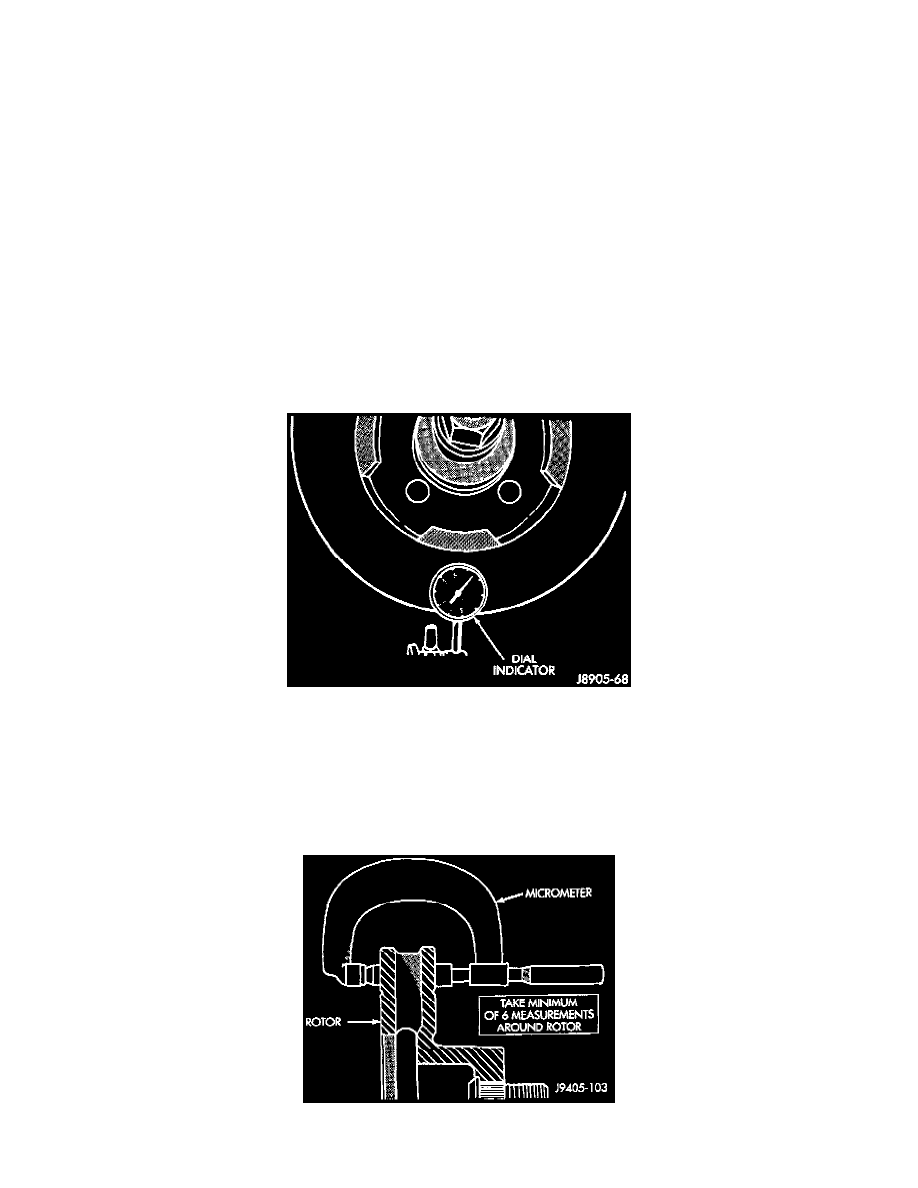Durango 4WD V8-5.9L VIN Z (1998)

Brake Rotor/Disc: Testing and Inspection
GENERAL INFORMATION
The rotor braking surfaces should not be refinished unless necessary.
Light surface rust and scale can be removed with a lathe equipped with dual sanding discs. The rotor surfaces can be restored by machining in a
disc brake lathe if surface scoring and wear are light.
Replace the rotor under the following conditions:
-
severely scored
-
tapered
-
hard spots
-
cracked
-
below minimum thickness
ROTOR MINIMUM THICKNESS
Measure rotor thickness at the center of the brake shoe contact surface. Replace the rotor if worn below minimum thickness, or if machining would
reduce thickness below the allowable minimum.
NOTE: Rotor minimum thickness is usually specified on the rotor hub. The specification is either stamped or cast into the hub surface.
ROTOR RUNOUT
Checking Rotor Runout And Thickness Variation
Check rotor lateral runout with dial indicator C-3339 or equivalent. Excessive lateral runout will cause brake pedal pulsation and rapid, uneven
wear of the brake shoes. Position the dial indicator plunger approximately 25.4 mm (1 inch) inward from the rotor edge. Maximum allowable rotor
runout is 0.102 mm (0.004 inch).
ROTOR THICKNESS VARIATION
Variations in rotor thickness will cause pedal pulsation, noise and shudder.
Measuring Rotor Thickness
